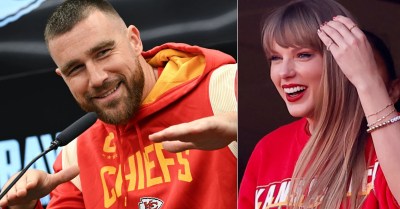The escalating value of NFL quarterback contracts has become a significant trend in recent years, with star quarterbacks increasingly consuming a larger portion of their team’s salary-cap space.
This rising financial commitment to the position has sparked a debate within the NFL community about the sustainability and implications of such a trend.
NFL Network’s Tom Pelissero recently discussed this issue on “The Rich Eisen Show,” noting that some league owners have even floated the idea of a quarterback cap. “There has certainly been discussion within the league among certain owners about even the idea of a quarterback cap, that at some point you don’t want quarterback numbers to go over a certain percentage of your salary cap,” Pelissero explained. Despite the conversations, he mentioned that the concept hasn’t gained much traction, largely because the market trend has been to secure top quarterbacks with lucrative deals.
RELATED: New Lawsuit Accuses NFL Of ‘Artificially’ Jacking Up ‘Sunday Ticket’ Prices
According to Spotrac, the dominance of quarterbacks in salary rankings is clear: the top 11 NFL contracts by total money, the top 16 by average annual salary, and the top 12 by practical guaranteed money all belong to quarterbacks.
This financial disparity is highlighted by cases like Daniel Jones, who, despite never having been selected for a Pro Bowl and having a modest career touchdown-to-interception ratio of 60-to-42, commands an average annual salary of $40 million.
In contrast, no other position player earns more than $35 million on average in their current contracts. This raises a critical question: should a team invest more in a quarterback like Jones than in standout players from other positions, such as Justin Jefferson, Nick Bosa, or T.J. Watt?
The value of a quarterback, however, cannot be underestimated. The position is often considered the most crucial on the field. The difference in team performance between a competent quarterback and a subpar one can be stark, as evidenced by teams like the New York Jets, who experienced significant fluctuations in success with changes at quarterback from Aaron Rodgers to Zach Wilson and Tim Boyle.
Consequently, teams are frequently willing to pay a premium, sometimes even perceived as overpaying, for reliable quarterbacks like Kirk Cousins or Derek Carr, rather than risk the instability associated with less proven players.
The ongoing discussion about quarterback salary caps presents a potential paradigm shift in salary-cap management, akin to the introduction of the rookie wage scale in 2011.
That change aimed to address disparities where rookies, yet to play a professional game, were earning contracts larger than seasoned veterans. Implementing a cap on salaries for established veteran quarterbacks, however, represents a more complex challenge and a significant shift from current practices.
Whether such a change will be implemented remains uncertain, but it would undeniably alter the financial landscape of the NFL, reshaping how teams allocate resources across their rosters.







